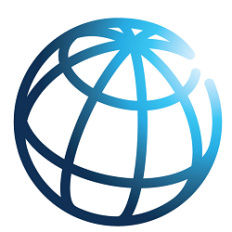Purpose of the Index
The annual Index study should promote greater transparency and accountability in the energy sector, which allow stakeholders to regularly receive comprehensive, up-to-date, and usable information they need to make evidence-based decisions.
Information disclosure is a good practice enabling proper monitoring, analysis, assessment and forecasting necessary for informed and reasonable decision and policy making. The Index aims to reduce information asymmetry in the energy sector, which will, in turn, decrease opportunities for unfair competition, discriminatory behavior and corruption and contribute to the proper functioning of markets and the energy sector as a whole based on the best European and global practices.
The information gaps or so-called «black boxes» – indicators where data is unavailable – identified by the Index provide the basis for targeted practical recommendations to stakeholders aimed at increasing the transparency of the energy sector, which is one of the key prerequisites for ensuring its sustainable, reliable, safe and efficient operation and development.
In addition, the transparency of the sector will play a crucial role in the process of post-war economic recovery of Ukraine, as it will significantly influence the possibilities of attracting investments and new technologies, the effectiveness of the development and implementation of energy policy, the regulation and operation of markets as well as the acquisition of Ukraine’s membership in the EU and NATO.
Index in numbers
- 200+ indicators based on EU legislation and best global practices of transparency and accountability.
- 8 categories and 24 subcategories reflecting different domains of the energy sector operation.
- 5 energy markets (electricity, natural gas, oil and liquid fuels, heat, and steam coal), as well as cross-sectoral issues.
- 6 transparency criteria are applied to assess each Index indicator.
 Target audiences
Target audiences
The Index’s ultimate beneficiaries are consumers. More transparent and competitive markets will incentivize better customer service and fair market pricing. Better awareness will allow consumers to act more economically reasonably, while minimizing expenses and maximizing benefits. Consumers will have better opportunities to protect their rights through public monitoring of energy companies and public authorities’ activity. A more active consumer position, driven by better awareness of the processes taking place in the energy sector, will contribute to the achievement of global sustainable development goals.
 Energy sector companies
Energy sector companies
Greater transparency reduces business risks for energy companies and promotes more efficient and innovative activity, fair competition, and better relations with investors, the government, and the public. New and potential participants in energy markets, banks, and other financial institutions, will receive better opportunities to assess risks, make investment or market entry decisions, and develop corporate policies. A less risky business environment improves the investment climate and attracts additional resources to the industry facilitating energy transition.
 Public authorities
Public authorities
The Index provides public authorities with practical recommendations on information disclosure. The transparency assessment encourages the opening of "black boxes" that lead to distortion of competition, inefficient operation of markets, and increased corruption and investment risks.
 Foreign partners
Foreign partners
Foreign partners will have better opportunities to understand energy markets and the energy policy of Ukraine, the effectiveness of its implementation, Ukraine’s compliance with its obligations under the Association Agreement with the EU, the Treaty establishing the Energy Community, the Paris Agreement, and other international treaties.
 Media, experts and CSOs
Media, experts and CSOs
Media, experts, and CSOs will have a clear understanding of gaps and shortcomings in information disclosure to more effectively advocate for increased transparency and accountability in the energy sector.





